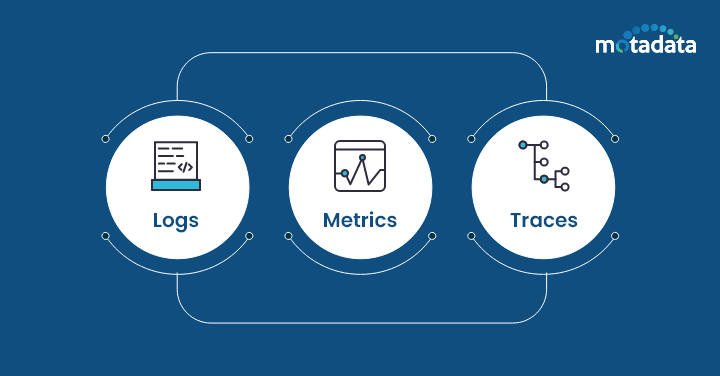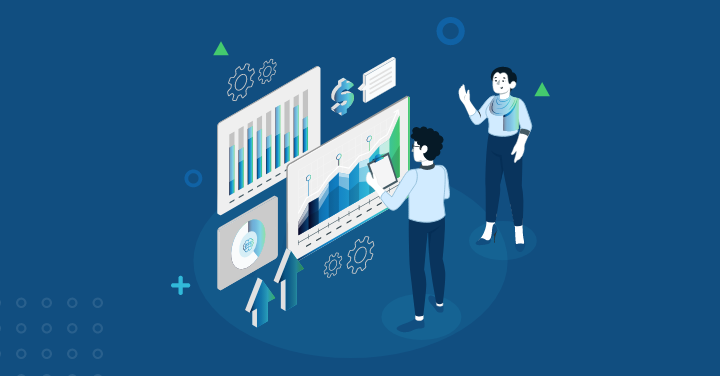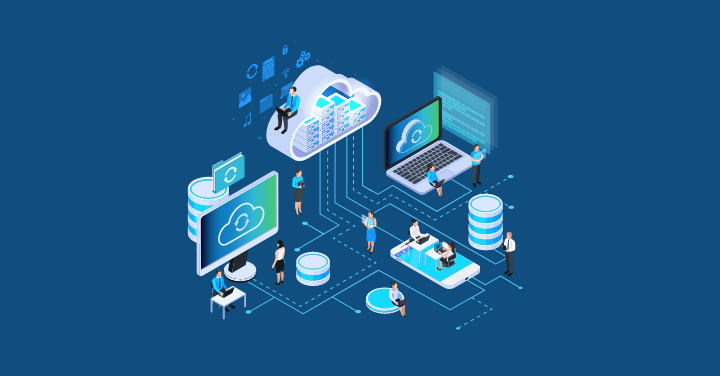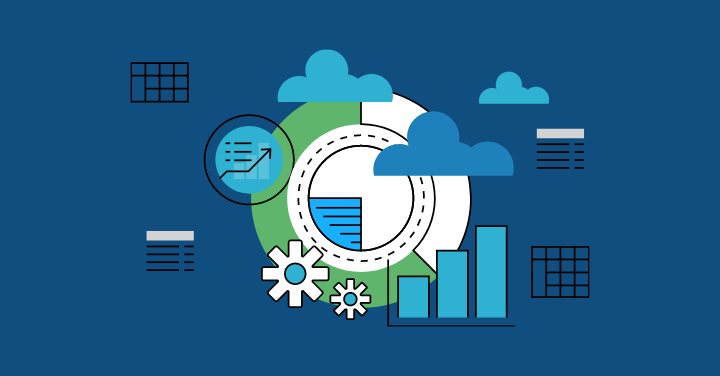In the evolving digital landscape, transformation has become a necessity for businesses in order to stand out and remain competitive.
As per stats records, around 91% of businesses use digital technologies and platforms to run their business more successfully.
With excessive dependency on digital technologies, there also comes the challenge of navigating through the complex web of dependencies and interactions.
Using traditional methods to manage and troubleshoot issues is no longer a great way to run these complex businesses.
As per the stats, 50% of cyberattacks happen on SMBs and you can’t protect it without a proper security measure.
Further, IT teams will face several issues in detecting anomalies and delivering optimal performance using traditional methods.
Hence, integrating modern methods such as incident data management to track and analyze IT operations as well as distributed cloud environments is essential for businesses.
Monitoring and observability are the two proactive measures that organizations can use to understand the behavior of their systems, identify issues in real-time, and maximize efficiency.
These two practices along with application performance monitoring (APM), will reduce human error and allow businesses to track all the networks, assets, and systems at a large scale.
Let us discuss Monitoring and observability in detail. Further, we will examine the differences between observability vs monitoring and how they work.
What is Monitoring?
Monitoring, on the other hand, is a procedure to collect, examine, and analyze information for the smooth running of system operations and reaching organizational goals.
Unlike observability, it does not provide deep analysis but tracks specific metrics, such as memory, CPU utilization rates, etc., and helps identify issues.
Rather than providing the reason behind the issue, it only focuses on identifying the issue.
Let’s say, you run an e-commerce business and start noticing that all the transactions made by customers are failing.
If you have a monitoring tool, it will track and send an update informing you about the sudden spike in the error rate to the administrator.
With this piece of information, administrators then will have to check and run an analysis to get a clear understanding of the root cause.
What is Observability?
Observability refers to the ability to measure a system’s current state based on external outputs, such as logs, metrics, and traces.
The term comes from the engineering concept of control theory, which describes the capacity to evaluate internal issues from the outside in.
With the help of an observability platform, IT teams can get a deeper understanding of the system’s behavior and its resources.
It provides clarity into the root cause of a failure or anomaly and suggests how to address the issue effectively.
When DevOps teams have context and a clear grasp of interdependencies, they can view the entire IT environment in an observable system.
Let’s take the same ecommerce example. If you have a monitoring tool, it will only track and send an update informing you about the issue.
However, an observability tool will help run a thorough analysis of all the logs, traces, and metrics to identify the underlying reason.
Using the observability solution, you will be able to track if there was a network delay, API malfunctioning, or any other issue responsible for the failure.
What Makes Application Observability Important?
To run any application process, there has to be some form of comments in the code.
It doesn’t make any sense to push changes without knowing if they make matters worse or better.
To the rescue comes Monitoring & Observability as part of the Pyramid of Power, and Analysis to provide actionable intelligence.
Despite its current popularity, observability is not at all new.
Logging has been around since the dawn of programming, which makes implementation visible by writing out messages that are useful.
Of course, it’s possible to track a service endpoint, for instance, even if it does not make itself observable, by simply calling it at every 10 seconds and measure success, failure & response times (also known as synthetic monitoring).
The most difficult kind of observability is distributed tracing within and between programmed IT services.
Making use of this form of observability in an effective and efficient way requires strong expertise and an understanding of the underlying principles of distributing requests that flow between providers.
Observability vs Monitoring: What’s the Difference?
The key distinction between monitoring and observability is whether data extracted from an IT system is predefined or not.
Monitoring practice focuses on collecting and displaying data, whereas observability collects, examines, and analyzes the inputs and outputs to determine the overall system’s health.
Secondly, monitoring tools send updates to administrators when something goes wrong, whereas observability tools inform on what and why something wrong is happening and how to fix it.
Tracking vs Correlating Data
Unlike monitoring, observability does not limit to only collecting and tracking data but also correlating data from different sources and tracking patterns or abnormalities.
Data Collection vs Interpretation
Another point of difference is that monitoring tracks the performance of a system over a period of time and alerts on noticing any issue.
However, observability includes monitoring and interpretation practices to decipher overall health and performance.
Key Criteria vs Complete Analysis
Monitoring tools only keep track of KPIs, whereas observability, tracks KPIs, identifies the root cause of the problem, and updates on how to fix it to improve performance.
In simple words, monitoring is a subset of observability and offers fewer functionalities in its comparison.
Observability vs. Monitoring: How it Works
Monitoring and observability both might sound similar but differ in focus and approach.
However, both of them rely on the same type of telemetry data. Let us break down the functioning of each and explain how they work:
Logs
Logs are the records that comprise all the information related to whatever is happening within your software, including all events, operations, and flow of control.
These are plain text records that have all the insights related to the performance of an application or system.
Be it errors, resource usage details, or any other information, you can find it all in the log files.
In fact, every component in a system maintains a log file, for example, security logs record all the information related to security procedures, threat detection, and incident remediation.
By having all these logs of different departments in one place, administrators can monitor and go through all the details faster.
It will not only help save time during the outages but also speed up the whole process of analysis.
Many businesses record huge volumes of data as they have complex networks, and cloud services, and use excessive digital technologies.
For such cases, log management makes things much easier for administrators.
It collects data from different other sources, consolidates it, and aggregates it in a single location for quick analysis and troubleshooting.
Log management solutions are great for gathering and saving log data so that you can look at it later.
Some of these solutions even let you check out the logs in real-time and get alerts if something weird happens.
These tools work exceptionally well for organizations that deal with a lot of data because they help gather and save information quickly and effectively.
Metrics
Metrics measure how well your applications and systems perform over a time period. These are calculated based on the data collected from external sources and platforms.
It generally includes pre-defined data, i.e., error rates or requests received per second, and dynamic data based on the current situation, i.e., the total products sold in a day.
With the help of these numerical measurements, administrators can view the trends and other changes that take place in a system over a period of time.
Traces
Traces help figure out how each operation moves throughout complex system.
With the help of traces, most organizations with complex networks are able to track and discover the potential issues related to the connections between services.
By following a request as it passes through multiple services, an organization can identify performance constraints, latency issues, and bottlenecks.
When monitoring, system administrators use these telemetry data to track how each application is performing and how it is dependent on the resources.
However, the observability platform goes a step beyond monitoring.
It uses the same telemetry data to understand the root cause of the problem and how each component relates to one another.
It collects, correlates, and analyzes how each data relates and works together.
Both the solutions go hand in hand as one notifies about the issue and the other supports in discovering the root cause.
Why You Need Both Monitoring and Observability
The distinction between monitoring and observability can often be blurry for development teams.
So, before we discuss, why we require both monitoring and observability, let us discuss their strengths and weaknesses.
Monitoring Strengths and Weakness
Monitoring tools keep track of predefined metrics on a constant basis and ensure that everything goes smoothly.
But, on noticing anything going unusual or beyond a certain limit or suspicious, they immediately release an early warning to the users.
This helps users get to know about the issue at an initial stage and they can fix the fault in real-time.
The only weakness of it is that, unlike observability, it lacks an in-depth understanding of the root causes of the problem.
In simple terms, the monitoring tools can warn you if something goes wrong, but they don’t know exactly what resulted in the error.
However, developers can enhance their understanding of the root causes of the problem by using observability software, which includes telemetry and APM tools.
Observability Strengths and Weakness
Observability solutions do not limit to only providing alerts but offer in-depth root cause analysis of the problem.
Also, they collect, correlate, and analyze data from multiple sources and implement long-term solutions.
The only weakness of observability tools is they may take longer time to resolve issues.
Monitoring observability are two separate operations that DevOps teams use to address different issues but work well together rather than against each other.
Both observability and monitoring solutions go hand in hand.
Monitoring solutions will send an alert or notify you as an issue arises and observability can support you in finding the root cause of a problem.
Combining the two can benefit businesses on a good scale since not all problems found by monitoring systems require in-depth investigation.
For instance, there are cases when you need to shut down the server for maintenance or other purposes.
Now, let’s say your server has gone down even when it shouldn’t, the monitoring tool will track and release a message updating that the server has gone offline.
In such a case, understanding what happened doesn’t require you to collect and examine a wide range of data. You can just maintain a log and continue with the operations.
You can use monitoring systems to detect deviations and send alerts.
Later, observability can step in to provide an in-depth understanding of the root cause behind the problem found by the monitoring system.
You can correlate all the data and unravel the complex issue with observability.
In addition to guaranteeing quick fixes for pressing issues, observability and monitoring strategy together will encourage proactive decision-making for long-term system effectiveness.
Also, you can monitor risks and issues at every stage of the software development lifecycle with observability.
Between Observability and Monitoring, Which is Better?
In the context of DevOps, monitoring and observability are complementary tools and their usage must rely on your organization’s goal.
Both observability and monitoring tools play crucial roles in distributed system and IT environments.
Monitoring focuses on providing early warnings and data collection, whereas observability software provides insights into the intricacies of system behavior and root cause analysis.
You can find several traditional monitoring tools for data collection and tracking, but they can’t pick up some actions quickly.
However, observability tools will help collect and interpret the data in real-time. Further, developers may accomplish this task more quickly and easily.
Both of them come with various benefits but at the same time can work together to provide substantial insights into the availability, performance, and health of a system across your IT infrastructure.
FAQs
In IT, observability refers to the ability of IT operations teams to measure the current condition of a system depending on the information collected from the three main pillars – logs, metrics, and traces. Its foundation depends on the telemetry data that you can obtain by instrumentation from the endpoints and services in your multi-cloud computing systems. Unlike monitoring, observability informs not only when something goes wrong, but why and how to fix the issue in real-time.
Logs, metrics, and traces are the main pillars of system observability that together play a key role in getting a clear understanding of system behavior, health, and overall performance.
The main key difference between observability vs monitoring is their focus and approach. On the one hand, monitoring is all about collecting data and updating when something goes wrong in the system, and observability, on the other hand, is all about collecting, interpreting, and analyzing data, identifying the root cause of the problem, and responding to unusual system behavior. Both use the same type of telemetry data, known as the three pillars of observability.
Observability tools provide a clear understanding of the system behavior using the information collected from the logs, metrics, and traces. It does not limit to only monitoring and providing surface-level alerts, but also identifying the root cause and implementing solutions for better performance. The solution uses ML algorithms and other practices, such as machine learning to identify patterns and discover the root cause of the problem before it results in any major impact. By analyzing relevant information such as metrics, logs, and traces, observability tools enable engineers and operators to gain insights into the system’s performance, diagnose issues, and optimize performance.








